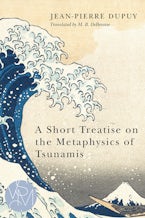During the last century humanity acquired the ability to destroy itself. The direct approach to destruction can be seen in such facts as the ever-present threat of nuclear war, but we have also developed the capacity to do indirect harm by altering conditions necessary for survival, including the looming cloud of climate change. How can we look forward and work past the dire position we now find ourselves in to achieve a sustainable future? This volume presents a new way of thinking about the future as it examines catastrophe and the human response. It examines different kinds of catastrophes that range from natural (e.g., earthquakes) to industrial (e.g., Chernobyl) and concludes that the traditional distinctions between them are only becoming blurrier by the day. This book aims to build a general theory of catastrophes—a new form of apocalyptic thinking that is grounded in science and philosophy. An ethics for the sake of the future is what is required, which in turn necessitates a new metaphysics of temporality. If a way out of the imminent danger in which we find ourselves is to be found, we must first look to radically alter our ethics.
ContentsPrologue. A Time of CatastrophesPart One | Risk and FatalityChapter 1. A Singular Point of ViewChapter 2. Sacrifice, Counterproductivity, and Ethics, or the Logic of the DetourChapter 3. Fate, Risk, and ResponsibilityChapter 4. The Autonomy of TechnologyChapter 5. Doomsaying on TrialPart Two | The Limits of Economic RationalityChapter 6. Precaution, Between Risk and UncertaintyChapter 7. The Veil of Ignorance and Moral LuckChapter 8. Knowing Is Not BelievingPart Three | The Limits of Moral Philosophy and the Necessity of MetaphysicsChapter 9. Memory of the FutureChapter 10. Predicting the Future in Order to Change It (Jonah vs. Jonas)Chapter 11. Projected Time and Occurring TimeChapter 12. The Rationality of DoomsayingNotesIndex



